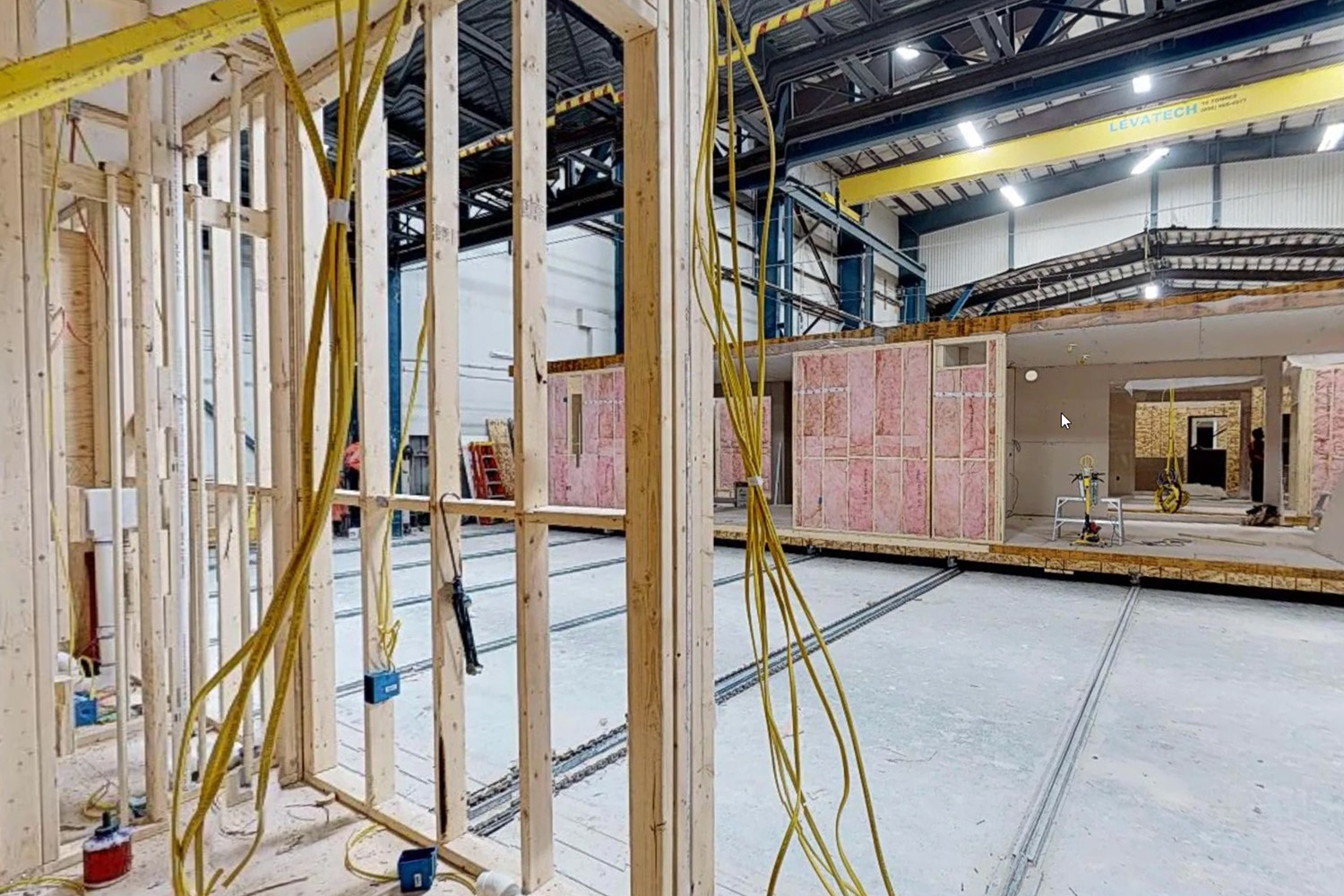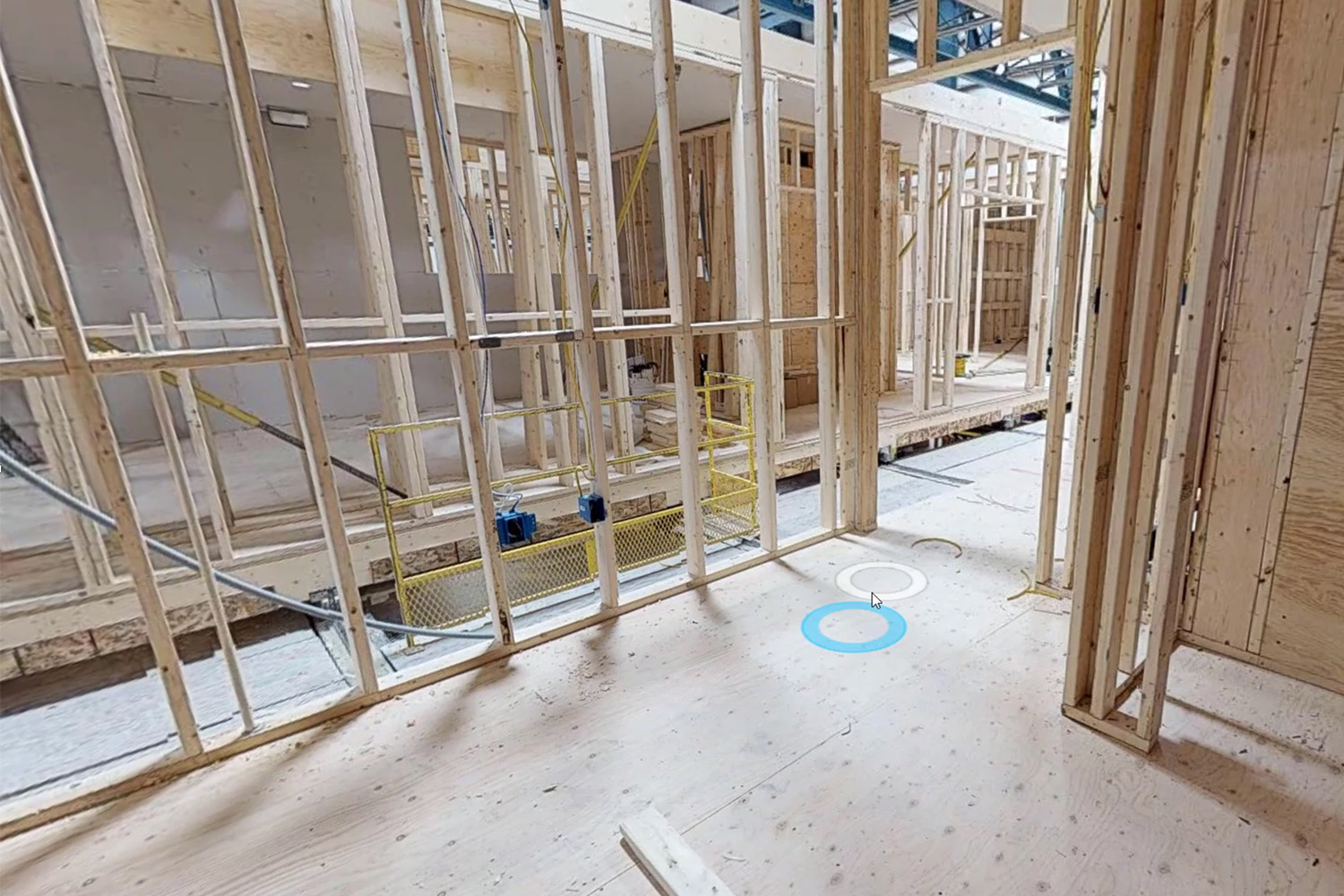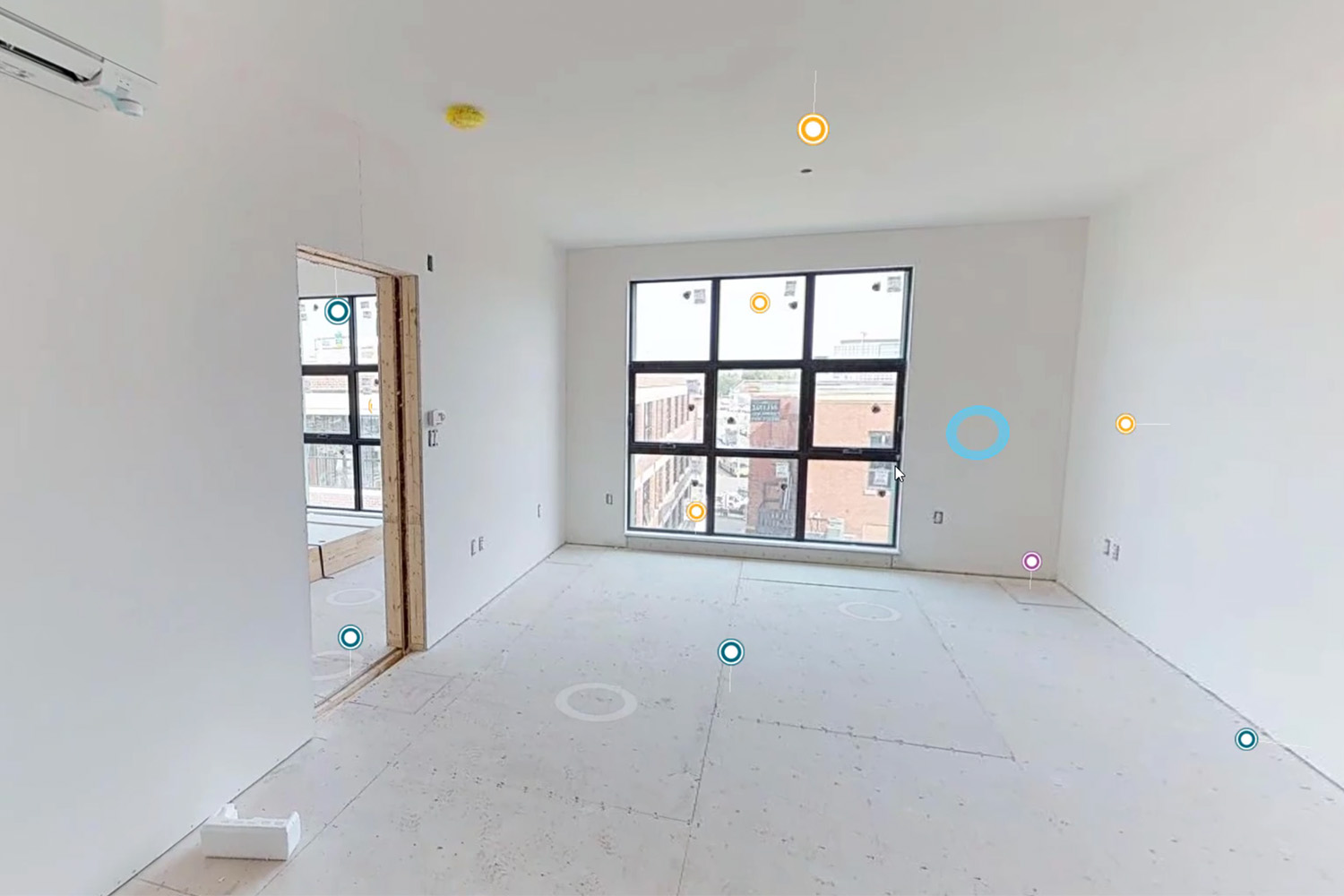VDC + Modular: Construction Phase

Part II: Construction Phase
Last week, Owen (Tocci’s VDC Manager) wrote about Tocci VDC’s presentation at BIMForum 2018. If you missed Part I: Design Phase, find it here. This week, we’ll be taking a deeper dive into VDC’s involvement in the construction phase of a modular project.
Taylor Tocci: Because the VDC Specialist plays a design assist role during the production of the documents and coordination of the building systems, they are a huge asset to bring into the construction phase. Many projects run the risk of losing information from design to construction during the handoff from preconstruction to operations. The VDC Specialist not only documents the decisions made during preconstruction, but they also are the common thread between the phases to personally carry the design intent across the finish line.
The first opportunity for the VDC Specialist to verify design intent is during the shop drawing review. The modular fabricator for Tocci’s latest modular project submitted each module as a separate shop drawing set. For this project, we received 3-12 module shop drawing sets a day and had less than 24 hours to review, make comments, and submit the shop drawings for the design team to review. Ideally, the same person who led coordination is the same person reviewing the shops, and ultimately performing the manual inspections at the fabrication facility.
Once the first few shop drawings have been approved, the modular fabricator starts to build. Within the first week or two of production, it is imperative that the whole team makes a visit to the modular factory – from the owner and architect, to the engineers and trade contractors. Having the team visit early in the production schedule ensures that the modules will be produced to the highest standards. If any changes need to be made, they can be made early in the queue and not impact all the modules of the building.
As the fabrication of the modules continues, it is recommended that the members of the team continue to make periodic trips to the factory for QA/QC. These trips greatly reduce the amount of onsite work/re-work that will be needed. However, it is likely that the modular fabricator is in a remote location, making it difficult for team members to take multiple trips. As part of our VDC process, we utilize 360-degree photo technology to capture some example modules for remote review. The design team and trade contractors can virtually “walk through” the modules in the factory and make comments along the way. The VDC role is to utilize technology to facilitate communication throughout the team — it’s knowing what tool to use, and when.
The next step is the placing of the modules. Everything leads up to this point – design assist, coordination of systems, site logistics, modular sequencing, shop drawing review, factory visits – this is the moment of truth. During the module erection, certain box-to-box MEPFP connections must be made. The VDC Specialist can help coordinate the trade contractors to make these connections. As soon as part of the building is in place, we begin the QA/QC process.
As with any building method, certain tolerances are to be expected, but large discrepancies are problematic. For example, there was concern that the exterior sheathing was not within tolerance for plumbness. In order to substantiate or negate this claim, the VDC team performed a laser scan of the exterior and produced a gradient map of each façade to assist the modular fabricator and siding contractor with shimming and corrective efforts. Again, VDC’s role is to creatively use technology in a way that communicates issues efficiently and effectively.
The role of the VDC team is not just to document and communicate from one phase of the project to the next, but also to document lessons learned for future projects. One of the ways we documented lessons learned from our most recent modular project was by producing a 360-photo file of a few of the modules directly after they were placed onsite. By capturing the modules in this state, we were able to embed notes which quickly communicate lessons learned.
As VDC professionals continue to step into roles of larger project responsibility, it allows for comprehensive project management and risk management. And for modular building in particular, starting the VDC Specialist during the design phase is non-negotiable, as is continuing the role of VDC throughout the construction phase.

